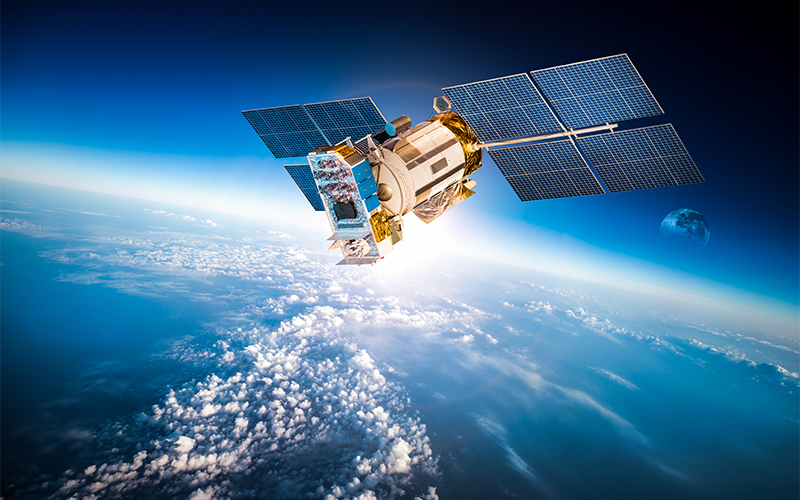Geospatial Data Services
Geospatial data integration use cases to enhance businesses
From disaster management to contact tracing in the pandemic, we have witnessed how geospatial technology is a powerful source of highly relevant data today. Leveraging geospatial data is quickly becoming a priority for business leaders. As a result, the global geospatial information system (GIS) market is expected to reach $13.6 billion by 2027. Geospatial analysis can potentially add value to businesses across industries, from IoT devices that actively share location data to integrating geographical data into business analytics for forecasting trends and capturing behaviour.*
What is geospatial data?
Simply put, geographical data collected by a geospatial information system is called geospatial data. Geospatial data is collected, stored, analysed, and presented using GIS software and geospatial management solutions.
Need for geospatial data integration
Geospatial data is a treasure trove of information that provides businesses with deeper insights into their customers. Geospatial management solutions have simplified visualising geospatial data such as business locations, farms, traffic status, natural resources, and cultural heritage, among others. Geospatial data analysis is used in:
Marketing campaigns:
With hyper-personalisation, marketing campaigns have become more complex, requiring businesses to understand not only the buying patterns of their customers but their location-specific behaviour as well. Geospatial analysis provides detailed information about location-specific services and competitors for businesses. This helps in creating strategies to reach out to target audience.Land management:
Land surveying, environmental analysis, aerial data collecting, landscape analysis, and emergency response planning can be streamlined and improved using geospatial data analysis. Such an analysis assists governments and planners in making better judgments about land use and management by lowering uncertainty and boosting communication between stakeholders.Telecom services:
Geospatial data integration helps telecom companies accurately map their networks and infrastructure. This directly improves the efficiency of their operations. Geospatial management solutions help you handle accurate data more efficiently. The decisions based on such data are more reliable.Law enforcement:
GIS provides valuable information regarding criminal activities that aren’t available through standard methods of investigation. Law enforcement agencies leverage their existing data and integrate it with geospatial information to map crime zones and hot spots and evaluate crime trends for possible forecasting.Transportation infrastructure:
GIS provides information about urbanisation, topography, traffic, and infrastructure, which enables planners and stakeholders to leverage data for troubleshooting issues and planning new infrastructure.Healthcare:
The recent contact tracing tools used during the COVID-19 pandemic were an excellent example of how geospatial data can aid the healthcare industry. Moreover, logistics, supplies, and operations of health and allied sectors can significantly benefit from integrating geospatial data in their processes.
In these and other sectors, geospatial analysis can help businesses in:
Choosing the right location:
By analysing geospatial data of various neighbourhoods and locations, businesses can gauge the prospects of a site. Information about competitors, customers’ points of interest, distance from parking lots, traffic information, and footfalls are other essential aspects that play a crucial role in selecting the physical location of your business. These factors affect the visibility of your business and, thereby, the sales.Streamlining supply chain:
Businesses can optimise their supply and distribution networks through geospatial data integration for smooth logistics. Satellite imagery data assists in timely rerouting, thus reducing costs. For e-commerce operations, geospatial data catalyses smooth and accurate delivery and inventory management.Targeted marketing:
Targeted marketing draws the attention of new customers while retaining the old ones. Geospatial data integration helps plan customer segmentation and understand their consumption behaviour. Accordingly, businesses can direct their marketing efforts to save costs.Analysing and forecasting trends:
Existing data, together with geospatial information, creates a pool of high-quality data to run analytics for various processes. These help businesses in forecasting future marketing trends to keep one step ahead of the competition. With location-driven consumption patterns, businesses can deliver innovative sales strategies, while information about the competitors can help businesses select the right products or services to their customers.
How can Infosys BPM help?
Infosys BPM has focused on technology practices with a global delivery model in the geospatial ecosystem. The Geospatial Data Services team of Infosys BPM includes highly skilled domain experts with the technological background of resolving industry-specific issues using data, solutions, and integration with automation models to suit all requirements.
*For organisations on the digital transformation journey, agility is key in responding to a rapidly changing technology and business landscape. Now more than ever, it is crucial to deliver and exceed organisational expectations with a robust digital mindset backed by innovation. Enabling businesses to sense, learn, respond, and evolve like a living organism, will be imperative for business excellence going forward. A comprehensive yet modular suite of services is doing exactly that. Equipping organisations with intuitive decision-making automatically at scale, actionable insights based on real-time solutions, anytime-anywhere experience, and in-depth data visibility across functions leading to hyper-productivity, Live Enterprise is building connected organisations that are innovating collaboratively for the future.






